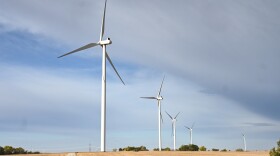From Harvest Public Media:
Worried about the price of wheat on the global market, Midwest farmers are planting less wheat.
Nationwide, farmers seeded about 5 million fewer acres in wheat this planting season than they did two years ago, according to the U.S. Department of Agriculture’s Winter Wheat Seedings Report (PDF) issued Tuesday.
Varieties of winter wheat, which is mostly grown in Texas, Oklahoma, Kansas, Colorado, Nebraska and Montana, make up the lion’s share of U.S. wheat production.
Declining planting numbers generally suggest that farmers expect wheat prices to remain low. Dan O’Brien, an economist at Kansas State University, says that has a lot to do with big supplies and a strong dollar.
The amount of wheat used in U.S. food production remains relatively consistent from year to year so swings in price often have more to do with demand for U.S. wheat on the export market. Nearly half of the wheat grown here is exported, O’Brien said.
The inflated dollar makes it difficult to trade U.S. goods on the world market and farmers are responding.
“In the face of low profitability we’re scaling back production a little bit and starting the process, eventually, of moving towards lower supplies and higher prices,” O’Brien said.
A bounceback in wheat prices, however, could take years. In the meantime, the wheat belt may keep shrinking as farmers switch to planting more corn.







